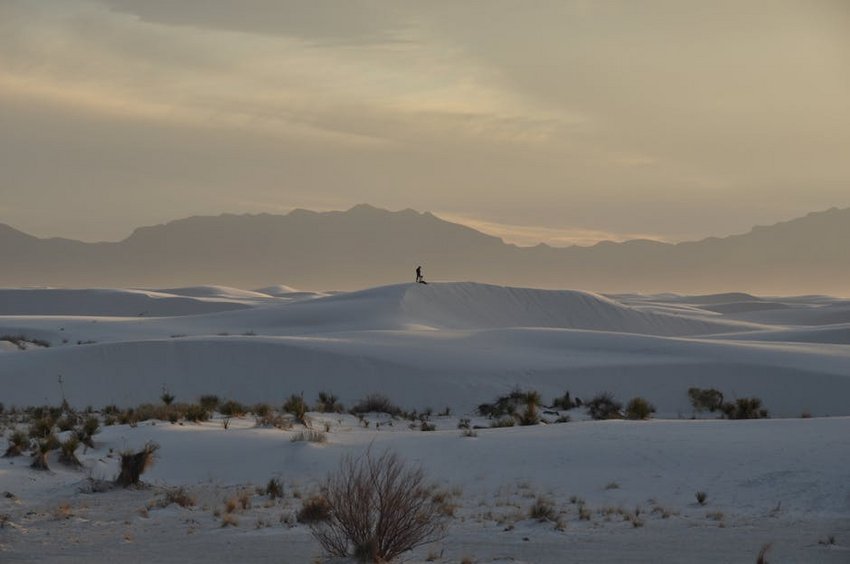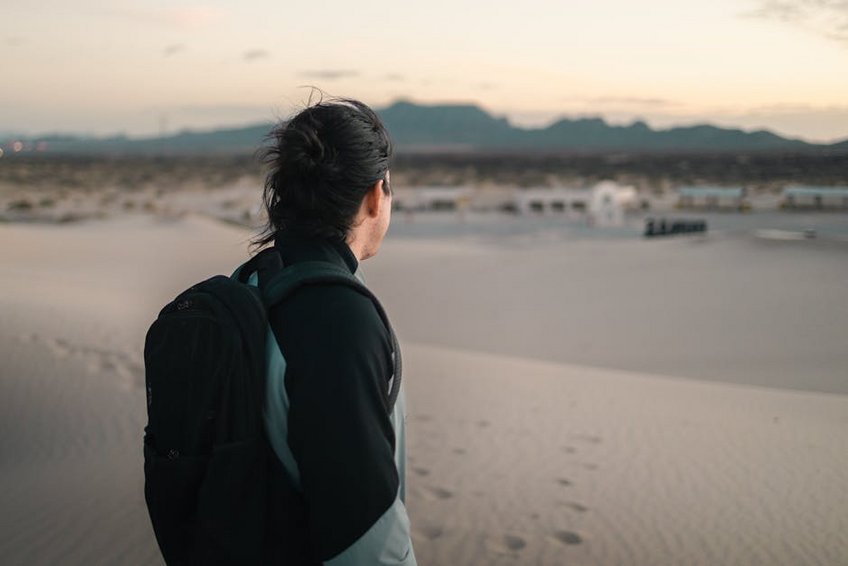New Mexico White Sands Sunset: Capturing Nature’s Golden Hour
Experiencing a New Mexico White Sands sunset transforms ordinary desert landscapes into breathtaking displays of color and light across 275 square miles of gypsum dunes. The shifting hues from brilliant orange to deep purple create unparalleled photographic opportunities while the cool evening sands offer a unique sensory experience. This guide covers everything from optimal visiting times to expert photography techniques for maximizing your sunset adventure.
Essential Information About White Sands
White Sands National Park protects the world’s largest gypsum dune field, featuring wave-like dunes that reach heights of 60 feet in some areas. The park’s unique white gypsum crystals reflect sunlight spectacularly throughout the day while creating extraordinary lighting conditions during sunset hours. Visitors can explore this otherworldly landscape through designated driving routes, hiking trails, and special sunset programs.
What Makes White Sands Unique
The park’s gypsum sand originates from ancient sea beds that evaporated millions of years ago, creating these brilliant white dunes through ongoing geological processes. Unlike typical quartz sand, gypsum crystals don’t absorb heat, making daytime visits comfortable even during summer months. This unique composition also creates the park’s famous reflective qualities that enhance sunset colors dramatically.
Park Access and Regulations
White Sands National Park operates daily except Christmas Day, with hours extending until one hour after sunset for evening visitors. The entrance fee costs $25 per vehicle for a seven-day pass, while annual passes and America the Beautiful passes provide excellent value for frequent visitors. All visitors must remain on designated trails and roads to protect the fragile dune ecosystem and wildlife habitats.
- Purchase tickets online through Recreation.gov to guarantee entry during peak seasons, especially for sunset viewing when capacity sometimes limits access.
- Check the park’s official website for temporary closures due to missile testing from nearby White Sands Missile Range, which occasionally affects access.
- Download offline maps and navigation apps before arriving since cellular service becomes unreliable throughout most of the park’s dune fields.
- Budget travelers spend $45-75 daily using campground accommodations outside the park, preparing their own meals, and utilizing the $25 vehicle pass valid for seven consecutive days of park access.
- Mid-range visitors allocate $120-180 per day for hotel accommodations in Alamogordo or Las Cruces, restaurant meals, and potential guided photography tours costing $75-150 per person.
- Luxury experiences range from $250-400 daily featuring premium hotels, private guided sunset tours, professional photography workshops, and fine dining in nearby cities with White Sands viewing packages.
- National Park Service – White Sands National Park
- New Mexico Tourism Department – White Sands Information
Weather and Seasonal Considerations
Southern New Mexico experiences extreme temperature variations between seasons, with summer highs reaching 100°F (38°C) and winter nights dropping to 20°F (-7°C). Spring brings frequent wind storms that can reduce visibility, while summer afternoons often feature sudden thunderstorms that create dramatic cloud formations for sunset photography. Fall typically offers the most stable weather conditions with comfortable temperatures and minimal precipitation.

Alt: “white-sands-national-park-gypsum-dunes-sunset-colors”
Planning Your New Mexico White Sands Sunset Trip
Your White Sands sunset experience requires careful timing and preparation to capture the magical transition from daylight to twilight across the luminous dunes. Arrive at least ninety minutes before official sunset time to secure parking, walk to your preferred viewing location, and set up photography equipment without rushing. The best viewing spots typically include the Interdune Boardwalk, Playa Trail, and areas along Dunes Drive where you can watch colors intensify across multiple dune ridges.
Best Time to Visit for Sunset Photography
Visit between March and May or September through November for optimal sunset conditions with moderate temperatures between 65-80°F (18-27°C) and minimal summer crowd levels. Summer months from June to August offer later sunset times around 8:15 PM but bring intense heat requiring extra water and sun protection. Winter visits from December to February provide earlier sunset times around 5:15 PM with potential for snow-dusted dunes creating unique photographic opportunities.
Budget Planning and Costs
Budget effectively by considering these three primary expense categories for your White Sands adventure.
Essential Preparation Checklist
Pack multiple layers including a warm jacket since temperatures can drop 30°F (17°C) rapidly after sunset, along with sunglasses and wide-brimmed hats for sun protection. Bring at least one gallon of water per person, high-energy snacks, and electrolyte supplements to prevent dehydration in the arid desert environment. Essential photography gear includes a tripod for stable low-light shots, lens cleaning supplies for gypsum dust, and extra batteries that perform better in cool evening temperatures.
Top Attractions and Activities
Beyond sunset viewing, White Sands offers numerous experiences that showcase the park’s unique landscape through different perspectives and activities. The Alkali Flat Trail provides a challenging 5-mile round trip hike across the most remote dune fields, while the Interdune Boardwalk offers accessible viewing of delicate desert vegetation and wildlife. Ranger-led sunset programs occur frequently during peak seasons, providing expert insights into the park’s ecology and optimal photography locations.
Must-See Highlights
The Dunes Drive scenic route stretches 8 miles into the heart of the dune field with numerous pullouts offering different perspectives for photography and sunset viewing. The Playa Trail reveals temporary rainwater lakes that create stunning reflections during wetter seasons, particularly dramatic during golden hour lighting conditions. Backcountry camping permits allow overnight stays in designated zones, providing opportunities for both sunset and sunrise photography without leaving the park between viewings.
Hidden Gems and Local Favorites
Locals frequently visit the less-crowded northern sections of the park accessible via unpaved roads that require high-clearance vehicles but offer unparalleled solitude during sunset hours. The nearby White Sands Missile Range Museum provides fascinating context about the area’s military history and occasionally offers public viewing days for special events. Lake Lucero tours (seasonal) take visitors to the source of the gypsum sands where crystals form before blowing northeast to create the dune field.
Photography Techniques for Sunset
Use a polarizing filter to reduce glare from the bright gypsum sand while enhancing color saturation in the sky during sunset transitions. Bracket your exposures by taking multiple shots at different settings to capture detail in both shadow areas and bright sky elements for later blending. Include human subjects or interesting foreground elements like vegetation or animal tracks to establish scale and visual interest within your sunset compositions.
Practical Travel Information
White Sands National Park sits approximately 15 miles southwest of Alamogordo, New Mexico, with the nearest major airport in El Paso, Texas, about 85 miles south. Most visitors rent vehicles for flexibility, though limited tour options operate from Las Cruces and Alamogordo during peak seasons. Accommodation choices range from basic camping to mid-range hotels, with more luxurious options available in larger nearby cities.
| Accommodation Type | Location and Features | Price Range (USD) |
|---|---|---|
| Camping | White Sands National Park backcountry sites or nearby BLM land with basic facilities and incredible stargazing | $15-25/night |
| Budget Hotels | Alamogordo properties with basic amenities, pool access, and convenient park proximity | $65-95/night |
| Mid-Range Hotels | Las Cruces accommodations with enhanced amenities, restaurants, and White Sands viewing packages | $110-160/night |
| Luxury Resorts | Inn of the Mountain Gods or El Paso premium properties with spas, fine dining, and guided tour options | $220-350/night |


